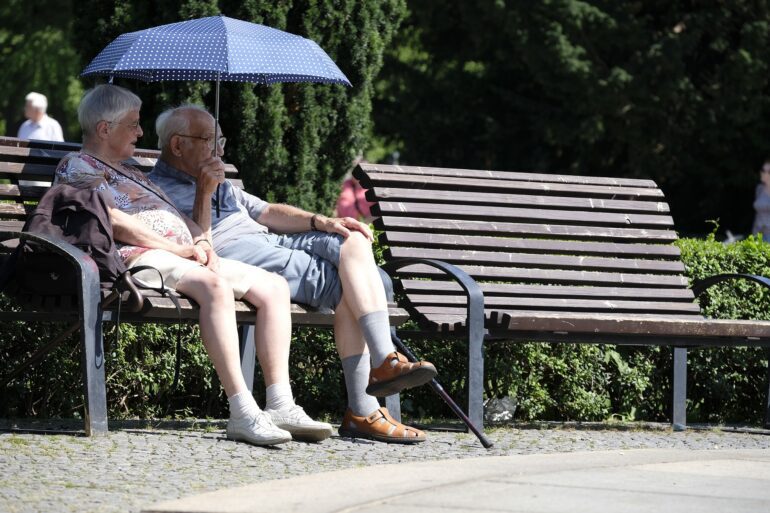TL;DR:
- Engineers at the University of Waterloo have developed an in-home AI tool for monitoring elderly residents’ health.
- The system uses artificial intelligence and wireless technology to monitor activities and detect emerging health issues without wearable devices.
- Trials have shown that the technology can alert medical experts and provide assistance when necessary.
- The AI tool can monitor activities such as sleeping, watching TV, eating, and bathroom usage.
- Lead researcher George Shaker highlights the low-power, machine learning-enabled radio systems used in the technology.
- The system can also detect falls without invasive devices like cameras.
- The technology aims to support overburdened public healthcare systems in caring for the growing elderly population.
- The system employs low-power radar technology, ensuring portability and easy installation.
- The researchers plan to collaborate with Gold Sentinel to commercialize the technology.
- The research has been published in the IEEE Internet of Things Journal.
Main AI News:
A groundbreaking trial has recently unveiled a remarkable in-home AI tool designed to monitor the well-being of elderly individuals. Engineers at the esteemed University of Waterloo have ingeniously harnessed the power of artificial intelligence and wireless technology to discreetly oversee the health of seniors within the comfort of their own living spaces, offering timely detection of potential health issues.
Unlike traditional methods that require wearable devices, this innovative system can accurately and continuously track an individual’s activities without encumbering them. The trials conducted by Canadian researchers have not only demonstrated the system’s ability to monitor the elderly person’s well-being but also to promptly alert medical professionals when intervention is necessary. The diverse range of activities examined during the trials included sleeping, watching TV, eating, and frequency of bathroom usage.
Lead researcher George Shaker, an accomplished adjunct associate professor of electrical and computer engineering, expressed his enthusiasm for this positive application of AI, stating, “After more than five years of dedicated work on this technology, we have unequivocally proven that low-power, millimeter-wave radio systems empowered by machine learning and artificial intelligence can be seamlessly integrated into homes, hospitals, and long-term care facilities.” Shaker further emphasized the system’s ability detect sudden falls without resorting to invasive devices like cameras, ensuring privacy is upheld.
This groundbreaking technology aims to alleviate the strain on overburdened public healthcare systems grappling with the demands of an ever-growing elderly population. Leveraging the advancements in wireless and health-based technologies infused with machine learning, this cutting-edge solution is poised to revolutionize the sector.
While certain physical or mental conditions can be anticipated, healthcare systems have long struggled to monitor individuals’ movements and identify potential issues around the clock. Therefore, this technology represents a significant leap forward in elderly care.
The operational process of this innovative system involves a wireless transmitter that emits low-power waveforms throughout the interior space, be it a long-term care room, apartment, or residence. As these waveforms bounce off various objects and the individuals being monitored, they are captured and processed by a receiver. Subsequently, the processed data waves are sent to an AI engine that analyzes and interprets the information for both detection and monitoring purposes.
One notable advantage of this system is its utilization of exceptionally low-power radar technology. This not only ensures portability but also minimizes power consumption, allowing for effortless installation on ceilings or walls.
In a collaborative effort to bring this groundbreaking technology to market, the academic researchers will partner with Gold Sentinel, a renowned firm specializing in healthcare solutions.
The research findings have been officially published in the esteemed IEEE Internet of Things Journal under the title “AI-Powered Non-Contact In-Home Gait Monitoring and Activity Recognition System Based on mm-Wave FMCW Radar and Cloud Computing.”
Conlcusion:
The development of an in-home AI tool for monitoring elderly healthcare signifies a significant advancement in the market. This breakthrough technology addresses the growing need for seamless and unobtrusive monitoring of the elderly population while also providing early detection of emerging health problems. By leveraging artificial intelligence and wireless technology, this solution offers a range of benefits, including accurate activity tracking, timely alerts to medical professionals, and the ability to detect falls without compromising privacy.
With the potential to alleviate the strain on public healthcare systems, this innovation presents promising opportunities for market growth and improved elderly care. Commercializing this technology in collaboration with industry partners further highlights the potential for widespread adoption and impact in the market.

